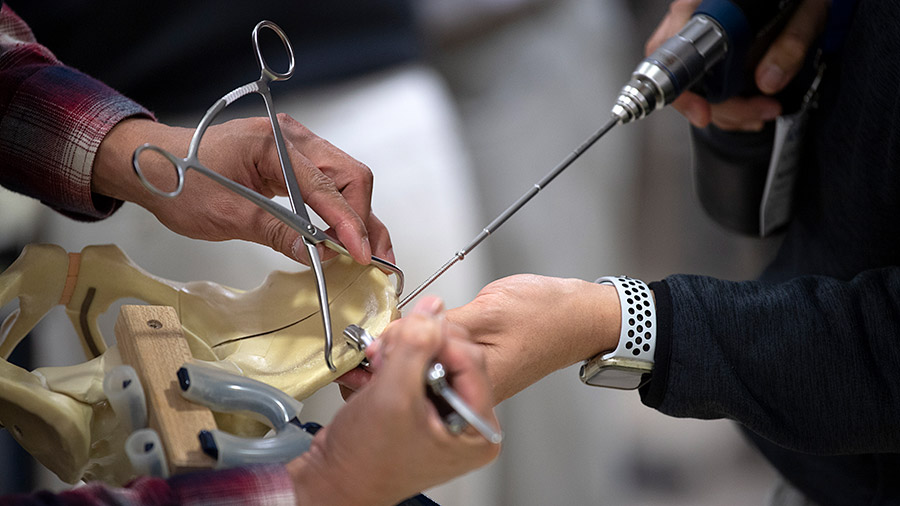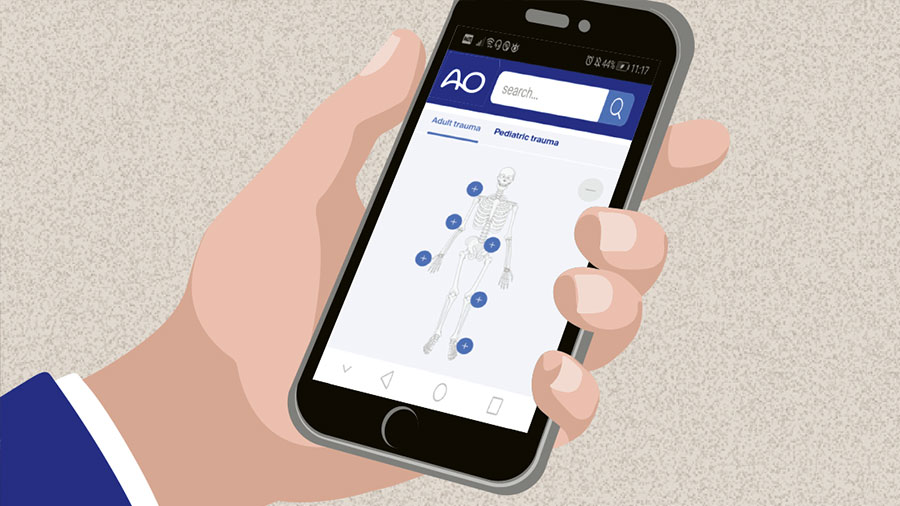Pelvis and acetabulum
Pelvic and acetabular fractures are among the most serious injuries treated by orthopedic surgeons and require rapid and precise treatment. In response, AO Trauma's pelvis education taskforce has defined a comprehensive curriculum to address these challenges.
Pelvis and acetabulum education taskforce

David Stephen (Canada)
Term: 2025–2027

Sherif Ahmed Radwan Khaled (EG)
Term: 2023–2025

Ismail Hadisoebroto Dilogo (ID)
Term: 2024–2026
Regional Program Contributors (RPCs)
Asia Pacific
Rahat Jarayabhand (Thailand)
Won-Tae Cho (South Korea)
Europe and Southern Africa
Sithombo Maqungo (South Africa)
Jordi Teixidor (Spain)
Middle East and Northern Africa
Abdulla S Alzahrani (Saudi Arabia)
Ali Jarragh (Kuwait)
Latin America
Marco Altamirano Cruz (Mexico)
Marco Rebatta (Peru)
North America
Ray Wright (USA)
Conor Kleweno (USA)
AO Curriculum Development Manager:
Past taskforce members
-
Past IPEsMiguel Angel Giraldez (Spain), 2022–2024
Jorge Barla (Argentina), 2018–2023
Stephen Sims (USA), 2020–2022
Mahmoud Abdel Karim Mohamed (Egypt), 2019–2021
Marius Keel (Switzerland), 2017–2019
Michael Stover (USA), 2016–2018
Zsolt Balogh (Australia), 2015–2017
Keith Mayo (USA), 2012–2015
Matej Cimerman (Slovenia), 2012–2014
Andrew Vincent (New Zealand), 2012–2012 -
Past RPCsAdrien RoaZoppi (Venezuela)
Pedro Caba (Spain)
Michael Leslie (USA)
Ahmed Abdelazeem (Egypt)
Anuraklekha Surapong (Thailand)
Yang Minghui (China)
Alexander Hofmann (Germany)
Ahmed Alghamdi (Saudi Arabia)
Tito Rocha (Brazil)
David Stephen (Canada)
Muhammad Wajid (Pakistan)
Said Saghieh (Lebanon)
Zsolt Balogh (Australia)
Takeshi Sawaguchi (Japan)
Stephen Sims (USA)
Milton Routt (USA)
Roger Wilber (USA)
Daniel Schweitzer (Chile)
Edgardo Ramos (Mexico)
Ismail Hadisoebroto Dilogo (Indonesia)
Program description

The AO Trauma Pelvis and Acetabulum curriculum consists of 11 modules and aims to provide chairpersons with a range of options to combine for the educational event of the highest relevance to their audience and to fit a given participant expertise level and timeframe.
Online and blended variations of the event formats have been defined. A full-day (or multiple part days) anatomical specimen lab can be added when infrastructure is available.
Events defined in the curriculum
AO Trauma Course—Pelvic and Acetabular Fracture Management (3 days)
AO Trauma Course—Pelvic Fracture Management
AO Trauma Course—Acetabular Fracture Management
Target audiences
Surgeons whose primary need is to learn or improve skills in pelvic and acetabular surgery, from various training paths:
- Orthopedics: sub-specialists, fellowship trained, pelvic-acetabular surgeons, general training
- Trauma: fellowship training, general training
Resources for faculty
Already a faculty member? Explore resources supporting your teaching activities.
Resources
Courses and webinars
Explore our database and search for events on specific topics.
Competencies

- Perform emergency clinical assessment with specific focus to pelvic ring and hemodynamic instability. Apply ATLS protocols
- Recognize when and how to perform emergency stabilization
- Perform secondary full patient assessment
- Order and interpret imaging evaluations
- Plan treatment—acute and definitive
- Assess the impact of comorbidities and concomitant injuries
- Plan and perform approach, reduction, and fixation
- Prevent, identify, and address complications
- Adapt treatment according to specific bone structure / quality
- Delineate and perform postoperative management protocol
- Perform salvage techniques
What does competency-based curriculum development mean?
Contacts

To address feedback or questions to this education taskforce, email the Curriculum Development Manager Michael Cunningham.


